In Wild Flowers: A Neck, a cluster of leafy stems shoots upward countering the horizontality of the receptacle from which it emerges. Upon further inspection a startling juxtaposition of man and vegetation emerges as this vessel is revealed to be a truncated bronze human torso. Part of a suite of eleven works by the Colombian born, Paris-based artist Iván Argote constructed out of a fragmented male body and live plants, Wild Flowers: A Neck offers a meditation on the future of monuments through strategies of destruction and creative reuse. In fact, to craft the series, Argote replicated and dismembered the nineteenth-century commemorative statue of George Washington created by John Quincy Adams Ward and installed at Federal Hall in New York City—the site of the first U.S. presidential inauguration.
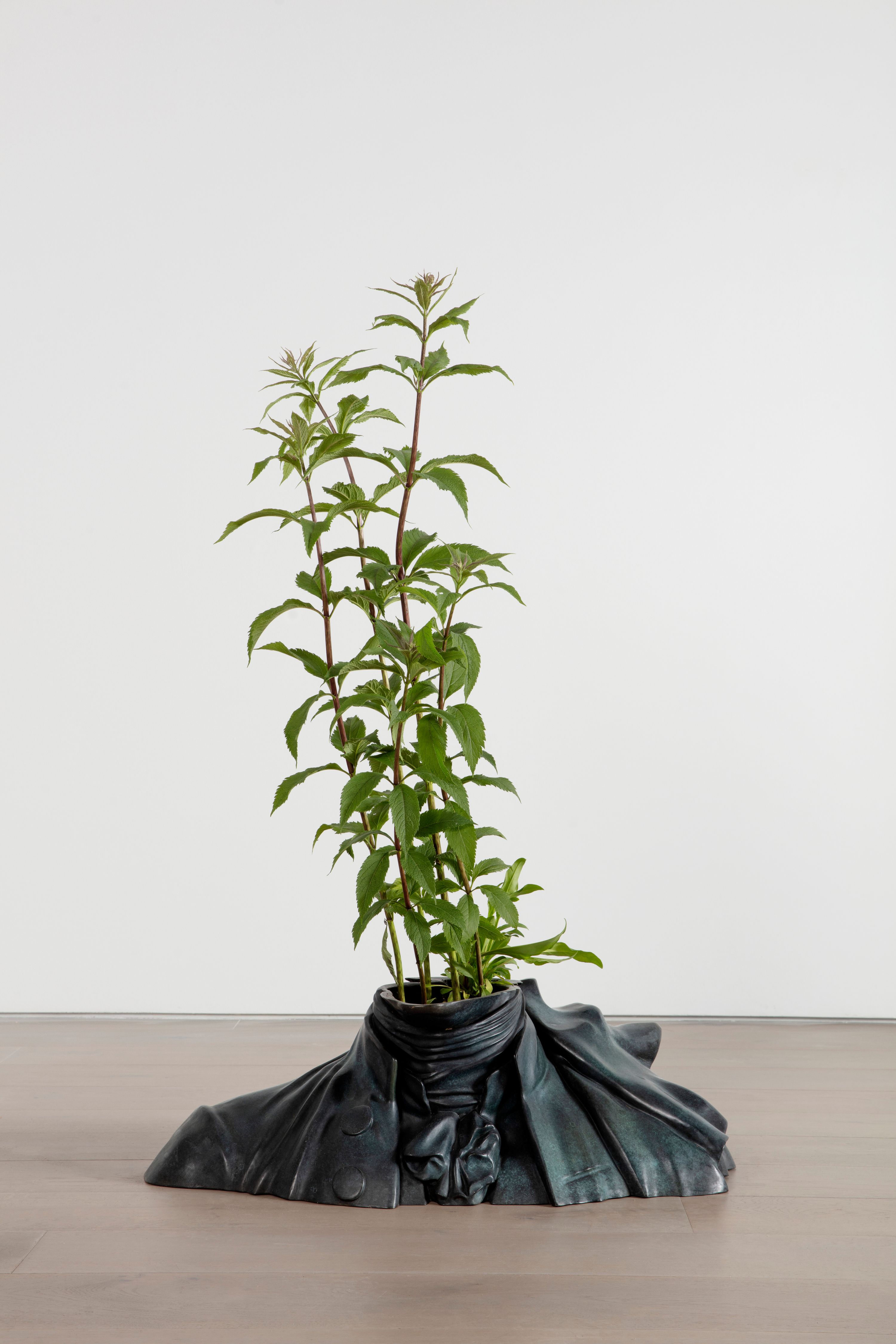
Argote has long probed the vexed legacy of monuments, particularly those with colonial entanglements as his photographic Turistas series of 2012- 2013 attests. For this project, the artist draped Indigenous ponchos—without permission—over statues of colonial era explorers and rulers presently installed in Bogotá, Madrid, and Los Angeles. With the addition of the traditional garb, the artist destabilizes conventional hierarchies of colonialism as figures once celebrated as daring conquerors of new lands are repositioned as humble visitors. At the same time, the poncho exposes the erasure of colonized communities from these problematic memorializations.
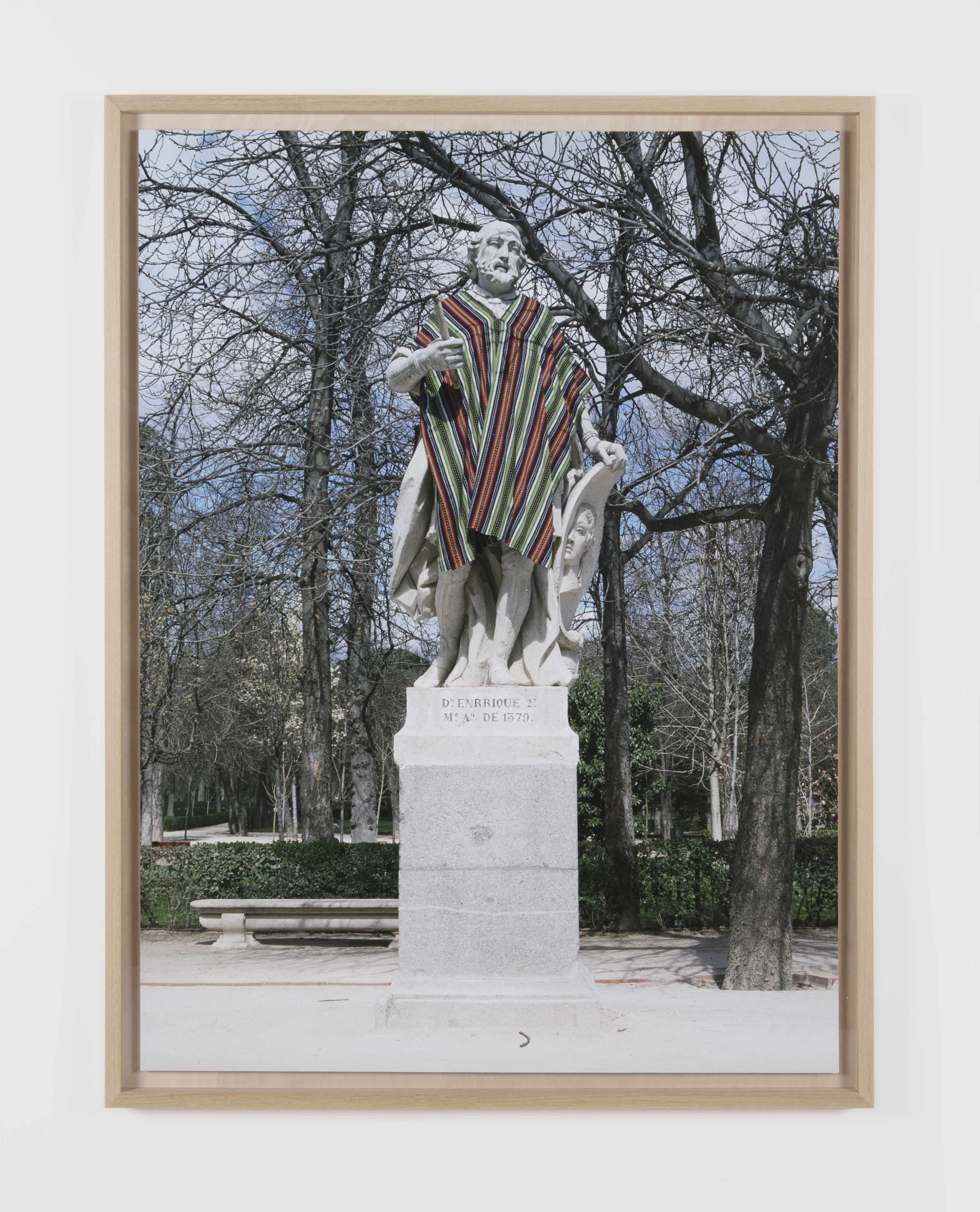
The artist’s Wild Flowers series amplifies and literalizes the deconstructive impulse underwriting previous projects like Turistas. Dismembered into eleven parts, the replica of Ward’s George Washington statue sheds its political function as it transforms into a series of supportive containers for natural life. Their modes of address vary, as Washington’s upper half breaks down into three floor-based plant beds, while other portions of the president’s body, such as his nose and thumb, are redeployed as smaller wall-mounted vases bearing local flora. Yet even as Argote’s acts of mutilation highlight his interest in revising historic human injustices, they also underscore another of his ongoing concerns: ecology. For Argote’s destructive technique opens a rehabilitative space for the natural world—one that feels especially timely in today’s climate crisis. Because Wild Flowers requires attention and sustenance, the piece recalibrates viewer engagement as beholders shift from passive observers of ideologically loaded portraits to potential caretakers of natural life. In entreating this responsibility of maintenance, Argote’s works further encourage a reevaluation of the historic triangulation between humanity, the built environment, and the increasingly imperiled natural world. The daily care required by Wild Flowers reaffirms the interdependency of humans and nature—one that has been historically minimized—and seeks to steer a legacy of human exploitation of the planet towards a more just symbiosis.
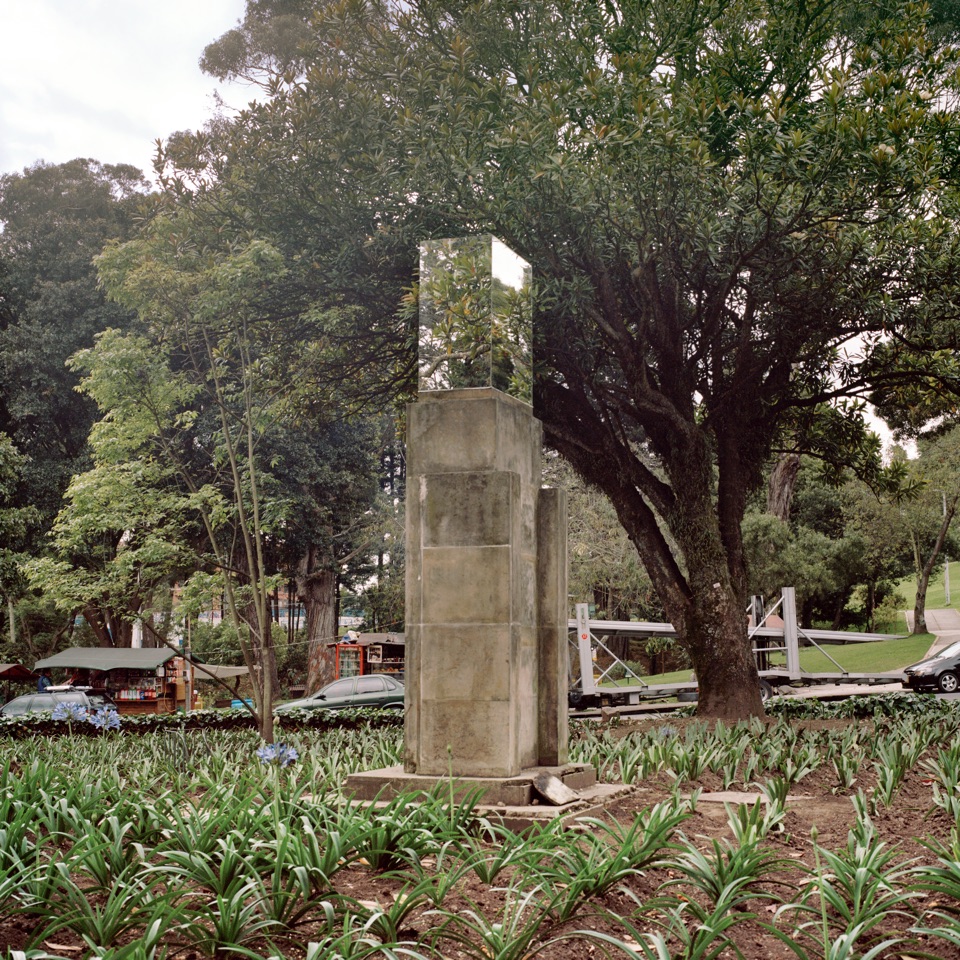
An ecocritical gaze elucidates Argote’s broader oeuvre as well. Take, for instance, Etcétera (2012 – 2018), a project focused on the statue of Spanish explorer Francisco de Orellana installed in a public park in central Bogotá, Columbia. The artist temporarily covered the existing bust of Orellana, who is conventionally remembered for discovering the Amazon River, with mirrors to create a reflective rectangle that rests atop its similarly shaped stone base. Argote then photographed his ephemeral intervention from the rear, effectively obfuscating the statue’s epigraph. As a result, the tall plinth like form now reflects the greenery of the surrounding park rather than displaying the visage of a problematic historical figure. Yet Argote’s action moves beyond correcting the historical record by temporary effacement, for his mirrors redirect our focus to the natural landscape as well. In so doing, his reflective additions reference past and present, calling to mind both the environmental devastation wrought by European colonial expansion, and the current forms of ecological degradation engendered by global capitalism. Here, the mirrors bring the spectator quite literally face to face with the crucial, though historically underappreciated role played by the natural world in the development of western society.
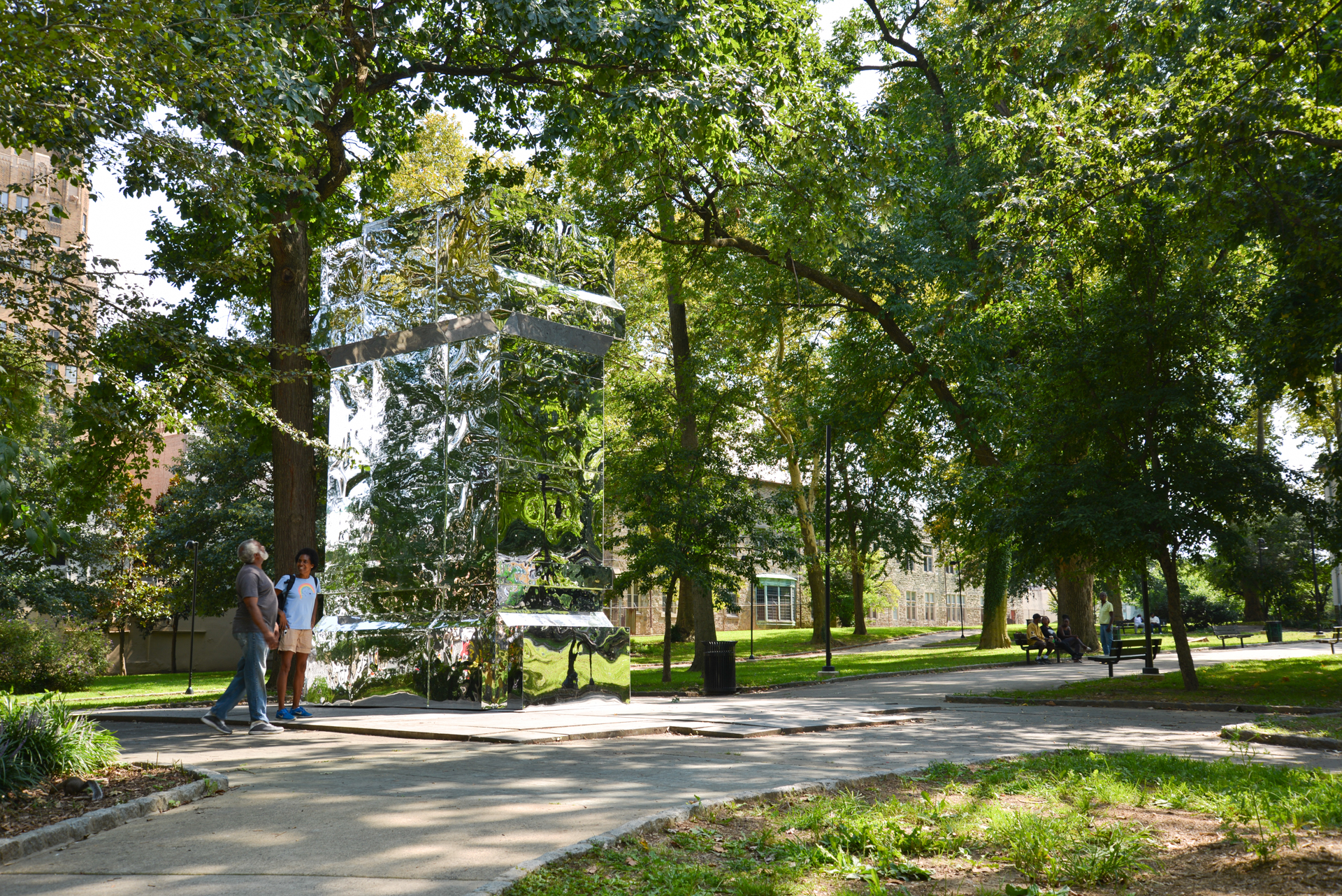
Consequently, the mirrors reconfigure the priorities of memorialization away from privileging acts of human creation to a reverence for and reflection upon the natural world. A related approach characterizes the work of Karen Olivier, whose 2017 intervention The Battle is Joined utilized mirrors to cover the Battle of Germantown Memorial in Vernon Park, Philadelphia. Art historically, Argote and Olivier each take up the legacies of Robert Smithson’s mirror displacements and land art to merge them with tactics of institutional critique addressed to increasingly urgent social concerns. The temporary nature of both interventions underscores that such forms of redress remain imaginations of a more equitable world that have yet to be actualized.
A site-specific commission Argote executed at Salton Sea, a man-made lake in Los Angeles, California in 2019 reveals analogous priorities. Titled A Point of View, it comprises two concrete stairways placed perpendicularly to one another that invite visitors to take in the natural vistas from a higher vantage point. While the stairs evoke ancient ziggurats or pre-Columbian architecture, their mode of interaction references and materializes emblematic scenes of Romantic painting, like Caspar David Friedrich’s 1818 canvas Wander Above the Sea of Fog. Friedrich’s composition depicts a man perched atop a rocky peak with his back to the viewer gazing out over a misty expanse of mountain peaks and clouds. While Friedrich’s meditative protagonist serves as a proxy for the work’s beholder, Argote’s installation instead courts direct bodily engagement. As viewers ascend steps inscribed with poetic phrases in both Spanish and English whose bilingualism affirms the area’s local communities, the sedimentation of history appears before them. Newly visible as a result of the lake’s drought-induced shrinking circumference are the skeletal remains of its former aquatic residents. Here too, as in Etcetera and in Wild Flowers, the jeopardized natural world replaces human achievement as the object to be memorialized by our gaze.
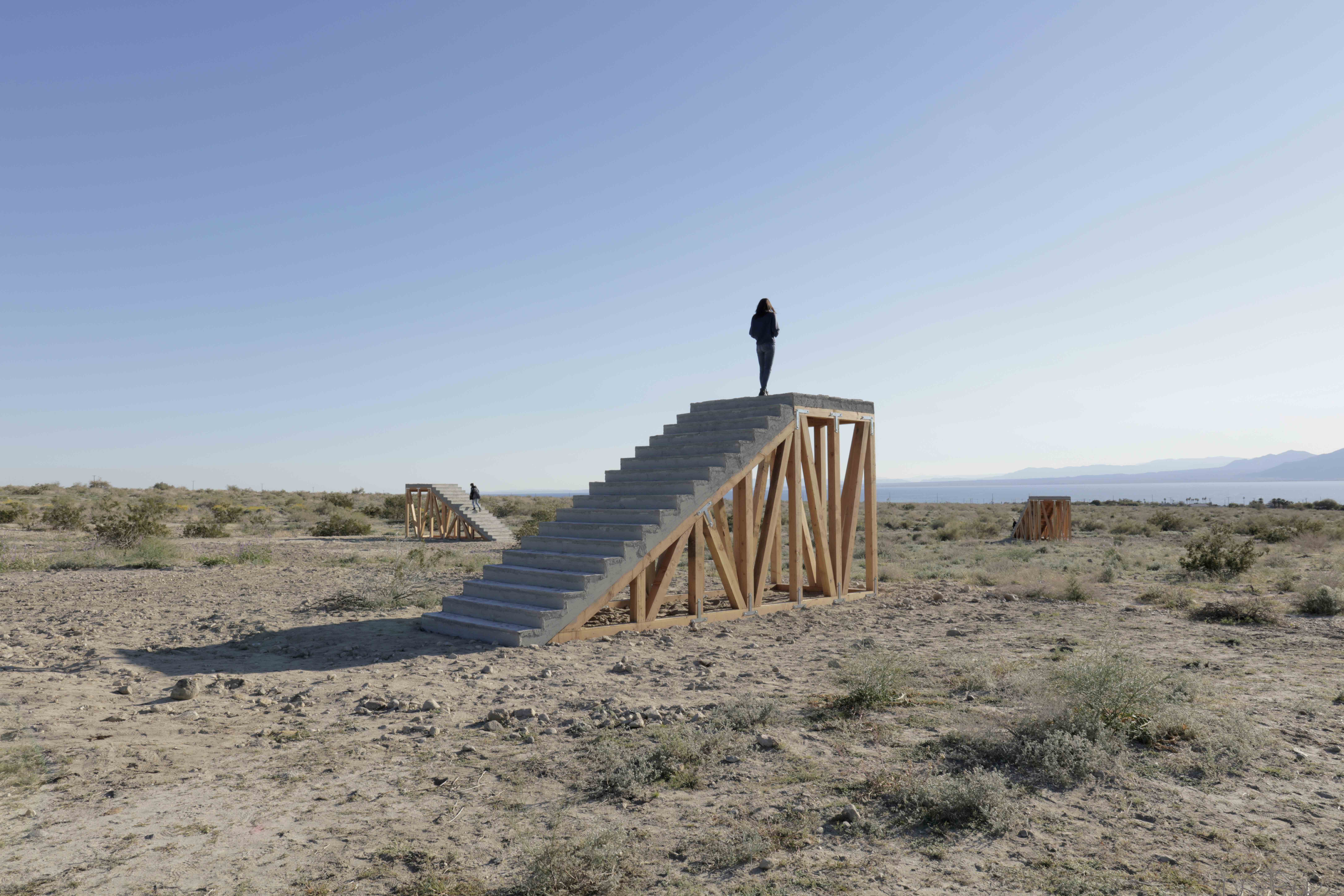
Argote’s procedures thus make a dual claim on public sculpture: on the one hand they revise and challenge the official records of colonial histories, centrally including their revered protagonists, and on the other, they shift our focus to the natural world. Provoked by these perspectival reversals, we are encouraged to reevaluate how and what we choose to remember. As a historically marginalized and progressively threatened earth is reinserted into monumental spaces, we are confronted with increasingly urgent ecological imperatives. Thus, Argote’s procedures at once dismantle oppressive histories and stimulate an ecocritical impulse that demands our immediate attention. Are we willing to assume the urgently needed responsibility of care for the natural world that Argote’s works request of us?
